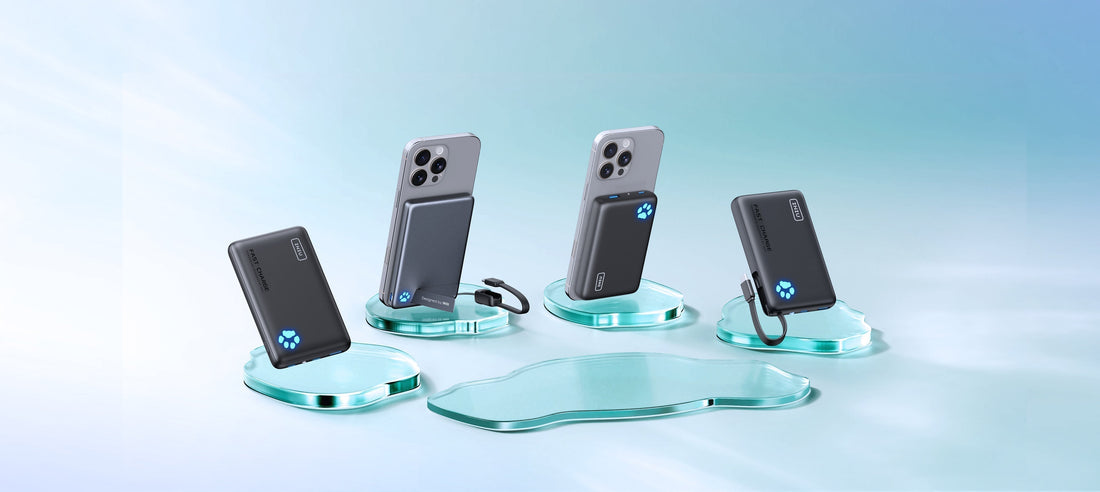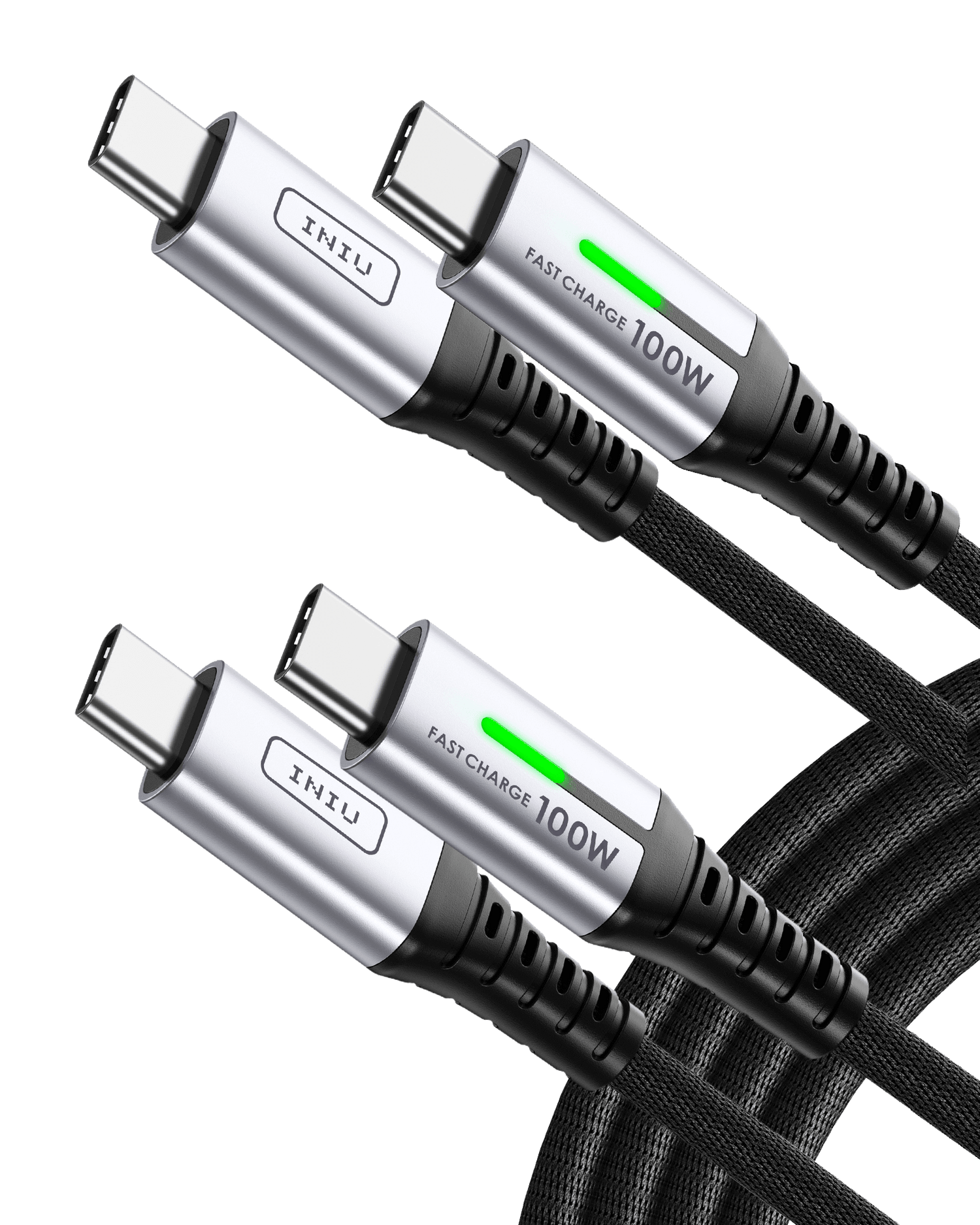
How to Choose the Best Thin Power Bank
Choosing the right slim power bank isn’t just about looks—it’s about performance, safety, and real usability. In this guide, you’ll learn how to identify a truly high-performance thin power bank by understanding the technical specs that matter most.
Why Going Slim Matters for Power Bank

Smartphones, earbuds, smartwatches, and even wireless pens are constantly running out of juice. With our dependence on mobile devices growing every year, the need for portable charging solutions has never been greater. But users don’t just want power—they want it light, fast, and on the go. That’s where the thin power bank becomes a game changer.
Modern power needs demand minimalist solutions. Thin power banks leverage advanced lithium-polymer (Li-Po) or stacked TinyCell technology to deliver substantial capacity (e.g., 10,000mAh) in profiles slimmer than some smartphones. This isn’t just convenience—it’s efficient energy density enabling true pocketability without daily charge compromises.
This article walks you through the key considerations when choosing a super thin power bank, including design, charging features, and real-life use cases. We’ll explore what tech specs actually matter, and how to spot the right ultra thin power bank for your lifestyle.
What to Look for in a Thin Power Bank
Not all ultra thin power bank options are created equal. Here’s how to cut through the noise and choose one that’s worth the investment.
Size & Build: Thin ≠ Fragile
When evaluating a super thin power bank, start with physical specs. Look for devices under 15mm thick and under 200g in weight. Materials matter too—reinforced plastic, aluminum shells, and scratch-resistant finishes all help ensure your charger can withstand daily use.
The INIU P73-E1, for instance, is just 0.5 in thin. Despite its ultra-thin design, it feels solid in hand and even comes with a built-in kickstand for added functionality.
Wireless Charging Capabilities
More users are switching to wireless charging for ease and convenience. A good slim USB power bank should offer Qi-certified wireless charging, preferably with Qi2 compatibility. If you care about fast charging, look for a slim wireless power bank with the Official Qi2 logo verification. This next-gen standard ensures better efficiency and stronger magnetic alignment with MagSafe-equipped devices.
The INIU P73-E1 supports 15W Qi2 wireless charging—a significant step up from the older 7.5W and 10W models. It also supports USB-C charging, so you are free to share your power bank with friends with different devices.
Magnetic Alignment
For iPhone users—especially those with models from the iPhone 12 through iPhone 16 with Apple Magnetic module—Magnetic compatibility is a crucial feature when choosing a wireless power bank. It ensures your device aligns automatically and accurately for efficient, uninterrupted wireless charging. A power bank ultra thin and Magnetic-compatible can provide a seamless user experience without requiring you to manually adjust your phone’s position while charging.
What Makes a Thin Power Bank Truly Reliable

It’s not just about size. To make the most of a slim USB power bank, you need to understand what’s happening inside. Let’s unpack the smart features that separate reliable chargers from disposable ones.
Smart Charging Protocols
Leading thin power bank models utilize USB Power Delivery (PD) and Programmable Power Supply (PPS) protocols. These technologies dynamically adjust voltage and current to meet the needs of your device, often delivering up to 20W for smartphones and up to 45W for compatible tablets or laptops. Smart chipsets integrated into the power bank monitor thermal activity, charging status, and input/output balance to optimize both speed and safety during charging.
Real Battery Output vs. Rated Capacity
A power bank rated at 10,000mAh may not deliver the same amount of usable power. Factors such as energy conversion efficiency, voltage regulation, and system loss can reduce the actual available output. Users should consider not just the labeled capacity, but the energy output in watt-hours (Wh) or effective delivery across real charging scenarios.
Recharging the Power Bank Itself
Recharge speed is a critical factor. Good slim USB power bank models now include USB-C input ports that support 18W–30W PD input. This allows a full recharge in about 2.5 to 4 hours using a compatible wall charger. Many models also support pass-through charging, so you can charge your phone and power bank at the same time—ideal for workdays or layovers when every outlet counts.
Where a Thin Power Bank Shines

Understanding where you’ll use your thin power bank helps ensure you get the most out of it. Let’s see how real people benefit from going slim in everyday scenarios.
Commuting & Urban Life
City life means always being on the move. Whether you’re on the subway, walking to a meeting, or working remotely from a park bench, a thin power bank helps you stay connected. The light weight and cable-free design of a wireless power bank ultra thin model makes it easy to charge without breaking your stride.
Travel & Digital Nomads
Frequent flyers and remote workers need power banks that comply with airport security and travel regulations. Airlines usually allow devices under 100Wh onboard.
A 10000mAh 45W super thin power bank like the P73-E1 stays well within those limits while giving you multiple charges on the road. Additionally, the slim form factor fits easily into a carry-on or backpack sleeve, and the built-in stand makes it perfect for watching movies during layovers.
Social Use & Daily Convenience
Whether you’re at a cafe or studying in the library, a slim USB power bank offers subtle and convenient top-ups without taking over your desk space. Wireless models with a strong magnetic grip let you continue browsing or texting without fumbling with cables.
The P73-E1’s built-in stand is ideal for Zoom calls, FaceTime, or hands-free viewing while your phone charges, allowing you to charge and use without restriction.
Who Should Buy a Thin Power Bank
If you’re always on the go, own a recent iPhone, or just hate the clutter of cables, a thin power bank is likely a great fit. Commuters, students, remote workers, and minimalists all benefit from a portable, wireless, and magnetic charging solution.
If you’re charging power-hungry devices like tablets or gaming consoles, or need days of backup power, consider supplementing your ultra thin Magnetic power bank with a high-capacity model (20,000mAh+). For most smartphone users, though, a super thin power bank offers the ideal mix of portability, power, and convenience.
Whether you’re picking a slim USB power bank for everyday errands or upgrading to a full-featured ultra thinpower bank for your next adventure, the right model makes all the difference. Devices like the INIU P73-E1 prove that thin doesn’t mean weak—it means smart, stylish, and ready to keep up with your lifestyle.



